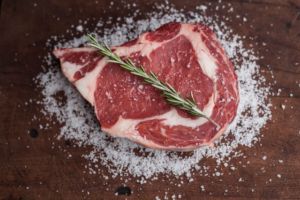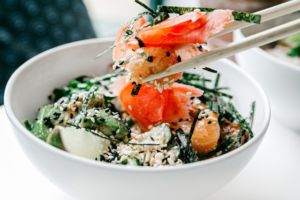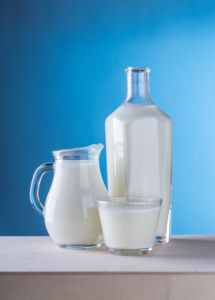1. Iron
Iron deficiency is most common in women of childbearing age. We have to eat extra iron to make up for the blood we lose each month. Pregnant women are the most vulnerable to deficiency. Women between the ages of 19 and 50 need 18 mg of iron a day (10 more than men the same age.) Pregnant women need 27 mg a day, while post-menopausal women only need 8 mg.
Symptoms of iron deficiency include:
Fatigue
Shortness of breath
Dizziness
Brittle nails
A sore, swollen tongue.
How To Get More:
Fortified breakfast cereal is one of the cheapest and easiest ways to improve your iron intake; one serving has 18 mg. Red meat and organ meats are also rich sources of heme iron. Heme iron is only found in meat, and it is the most absorbable form of iron. Non-heme iron can be found in vegetables like beans and dark leafy greens. The body less easily absorbs this form, so you have to eat more of it to meet your daily requirements.
Iron supplements are also available, but absorbability varies, and you are probably better off getting it from food if possible. Vitamin C helps your body absorb iron, so pairing Vitamin C rich foods like orange juice, bell pepper, or kale with meat or other iron sources can help you get more bang for your buck.
2. Iodine
Iodine is a mineral that is essential for thyroid function. It also plays a role in fetal brain development. Babies born to mothers who are iodine deficient are more likely to have intellectual disabilities. Women between the ages of 20 and 39 need 150 micrograms (mcg) every day, but this age group is commonly deficient. If you have struggled with low thyroid or have symptoms of low thyroid, such as fatigue, feeling cold, weight gain, fatigue, and hair loss, you might be low in iodine.
How to Get More
Dairy products like low-fat yogurt and milk are great sources of iodine, with 75 mcg and 56 mcg, respectively per serving. Anything that comes from the ocean is rich in iodine. Seaweed, cod, tuna, and shrimp are some of the best sources from the sea. One variety of seaweed, called Kombu Kelp, can contain up to 2,000% of the recommended daily intake per serving. Eggs are also a good source; one large egg contains 24 mcg.
Hint: Many of the nutrients in eggs, including omega 3s, are heat sensitive and found in the yoke. Eating your egg with an undercooked yoke can preserve these nutrients.
3. Vitamin D
A pale-skinned person will make over 10,000 IU’s of vitamin D during ten minutes of full-body sun exposure. For years the FDA’s recommended intake of vitamin D in supplement form has been no more than 600 IU’s per day. This recommendation has been called into question, but no new recommendations have been issued yet. Vitamin D helps your body use calcium to strengthen your bones and plays a role in immune function and mental health. Older adults, people with dark skin, nursing infants, and people with limited sun exposure are at high risk for vitamin D deficiency.
Symptoms of a deficiency include:
Poor bone health
Soft bones in infants and children
Depression (especially in women with the polycystic ovarian syndrome)
Obesity
Type 2 diabetes
Increased risk of certain types of cancer
How To Get More:
If you suspect you are deficient, talk to your doctor. Your doctor will be able to recommend the right dosage of Vitamin D to get you back on track. Very few foods contain Vitamin D. Cod Liver Oil is the best source, with 1,360 IU’s per tablespoon. Sockeye salmon, egg yolks, and fortified foods such as cold cereal, milk, and orange juice are also good sources.
Spending 15 to 30 minutes in the sun without sunscreen per day can also help keep your levels where they need to be. Again, you should discuss this with your doctor as your sun exposure needs will vary depending on skin tone and history of or risk for skin cancer.
4. Calcium
Women who are deficient in calcium often don’t know it until it’s too late and they already have osteoporosis. You can prevent this scenario by making sure you get your recommended daily amount now. If you are under 50, you’ll need 1,000 mg, women over 50 need 1200 mg. In addition to bone health, calcium also plays a role in blood clotting, muscle contractions, and heart rhythm. If you are severely deficient, you might notice these symptoms:
Confusion or memory loss
Muscle cramps or spasms
Depression
Hallucinations
Brittle nails
Bone fractures
Severe deficiency is uncommon in the western world, but moderate deficiencies that continue for years can put a person at risk for osteoporosis and other health problems later in life.
How To Get More:
Calcium is relatively easy to get enough of through food alone. Milk products, dark green leafy vegetables, and fortified orange juice are all significant sources of calcium. Keep in mind that you need vitamin D in order for calcium to fortify your bones, so pay attention to both of these nutrients for bone health.
5. B12
People of any age can experience B12 deficiency, and it is especially common in vegans and vegetarians. Older women, even those who eat meat, are at a higher risk than younger women because the body’s ability to absorb B12 deteriorates with age. B12 is vital for red blood cell formation, neurological function, and digestion.
Symptoms of deficiency include:
Anemia
Swollen tongue
Trouble thinking or “brain fog.”
Fatigue
Muscle weakness
Tingling and numbness in extremities
New or worsening depression
Elevated homocysteine levels
How To Get More
Women over the age of 14 need 2.4 mcg of B12 daily, and pregnant women need 2.6 mcg. The breakdown of B12 in the body is a complicated process that is mediated by a protein in the stomach. If your body doesn’t make enough of this protein, you may be deficient in B12 even if you get enough in your diet. Talk to your doctor if you are experiencing symptoms of B12 deficiency. They can rule out absorption problems and recommend a treatment plan that may include injections. Fish and shellfish, meat, eggs, and dairy products are all excellent sources of B12. A double cheeseburger has 2.1 mcg- almost your whole daily allowance.
6. Folate
Our bodies need folate along with B12 and iron to prevent anemia. Folate (also called B-9 or folic acid) is essential for neurological function and DNA production. Folic acid is a shelf-stable version of folate that has to be changed into folate’s active form by the body.
Some people can’t turn folic acid into the active form. If you eat a lot of foods that are fortified with folic acid (such as cereals and white bread) but have symptoms of deficiency, you should ask your doctor to check you for MTHFR gene variants. If you test positive for one of these variants, you may need to avoid folic acid enriched foods and eat foods with naturally occurring folate instead. Here are the symptoms of folate deficiency:
Premature grey hair
Fatigue
Mouth sores
Tongue swelling
Growth problems
Symptoms of anemia such as weakness, lethargy, paleness, and shortness of breath
A baby born with a neural tube defect
new or worsening anxiety or depression
How To Get More
Women over 13 years old need 400-600 mcg daily. Beef liver contains a whopping 215 mcg, half a cup of boiled spinach contains 131 mcg, and half a cup of boiled black-eyed peas contains 105 mcg. Citrus fruits, legumes (especially chickpeas), and dark green vegetables like asparagus and broccoli are also excellent sources.








